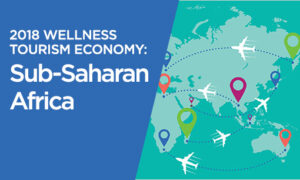Africa Wellness Initiative Resources

Africa Wellness Initiative Trends for 2025
Africa Wellness Initiative 2025 Trends AFRICA RISING– The Next Frontier in Global Wellness This report will explore Africa’s rise as a global wellness leader, deeply rooted in its authentic traditions. Across the continent, movements are emerging that honor ancient traditions ... Read More

Homecoming to Africa: The Rise of Cultural Tourism from the African Diaspora
"A person without knowledge of their past is like a tree without roots" - African Proverb Across the world, the African diaspora carries a shared thread - an unbreakable bond with the continent of their ancestors. Whether they are first-generation ... Read More

Home-Grown Wellness Retreats in Africa 2025 : 1st Edition
"Our mission is to Heal the earth - and thereby ourselves- by living sustainably within an Eco-friendly and Indigenous framework."Joshua Asiedu Celebrating the essence of home-grown African wellness retreats, our first edition pays tribute to these handpicked hidden gems - ... Read More

Africa Wellness Research Reports
Move To Be Well: The Global Economy of Physical Activity - 2019 Sub-Saharan Africa Report First-ever research report on the six-sector global physical activity economy, including the fitness, sports & active recreation, mindful movement, equipment, apparel/footwear and technology markets. DOWNLOAD ... Read More

GWI Initiatives Are Instrumental in Empowering Wellness Worldwide
GWI Initiatives Are Instrumental in Empowering Wellness Worldwide The nonprofit Global Wellness Institute (GWI) supports a wide range of important industry initiatives that further the growth of the various sectors of the wellness economy. Led by Initiative Chairs who are ... Read More

Africa Yellow Pages
Africa Wellness Initiative Resources Africa Yellow Pages 1. AFRICAN PLANTS The African climate is diverse, containing a rainforest in the center of the continent where it's hot and wet and two large deserts, the Sahara and the Kalahari. A vast ... Read More

Africa Wellness Initiative Resources: 2017 Briefing Paper
Africa Wellness Initiative Resources 2017 Briefing Paper The briefing paper is a snapshot of this industry sector including valuable information on latest trends, challenges and initiative accomplishments. READ NOW ... Read More

Africa Wellness Initiative Resources: Magazines
Africa Wellness Initiative Resources Magazines SWAA Insights Digital Magazine ... Read More

African Wellness Initiative Resources: Spa Associations
African Wellness Initiative Resources Spa Associations Moroccan Spa Association (A-SPA-MAROC) South Africa Spa Association (SASA) Spa & Wellness Association of Africa (SWAA) ... Read More

Africa Wellness Initiative Trends for 2022
Africa Wellness Initiative 2022 Trends Africa: The Next Frontier for Innovations As the world continues to navigate post-pandemic and through other emerging global challenges, Africa has shown great resilience and with that has come great innovations that have an impact ... Read More

Africa Wellness Initiative Resources: Africa Yellow Pages
Africa Wellness Initiative Resources Africa Yellow Pages 1. AFRICAN PLANTS The African climate is diverse, containing a rainforest in the center of the continent where it's hot and wet and two large deserts, the Sahara and the Kalahari. A vast ... Read More
























































